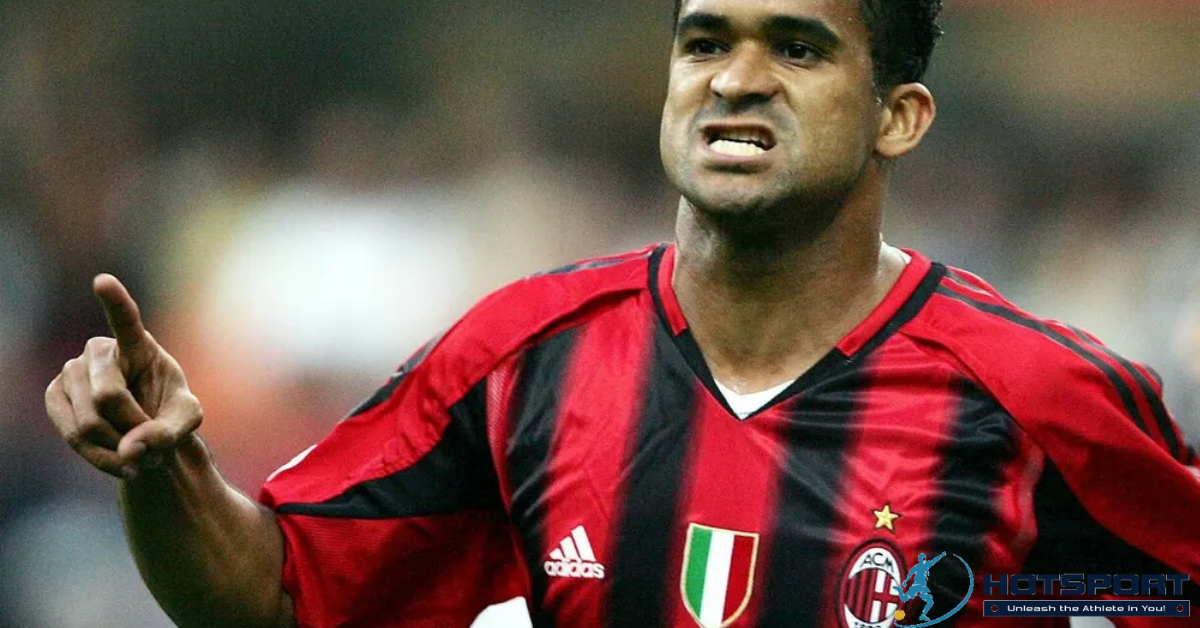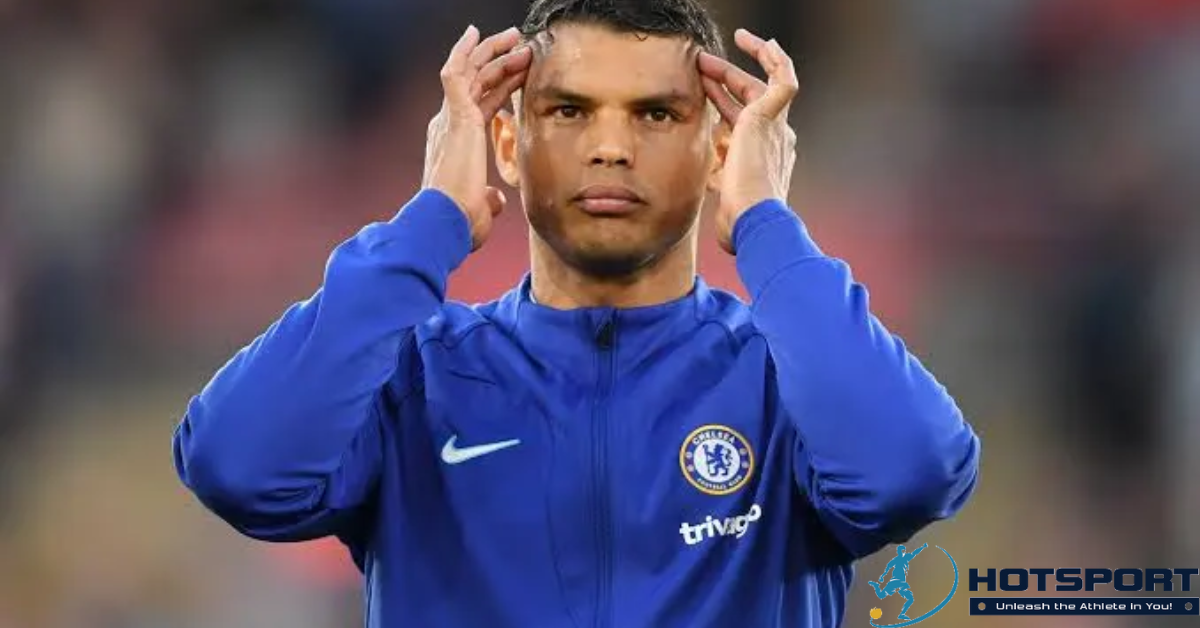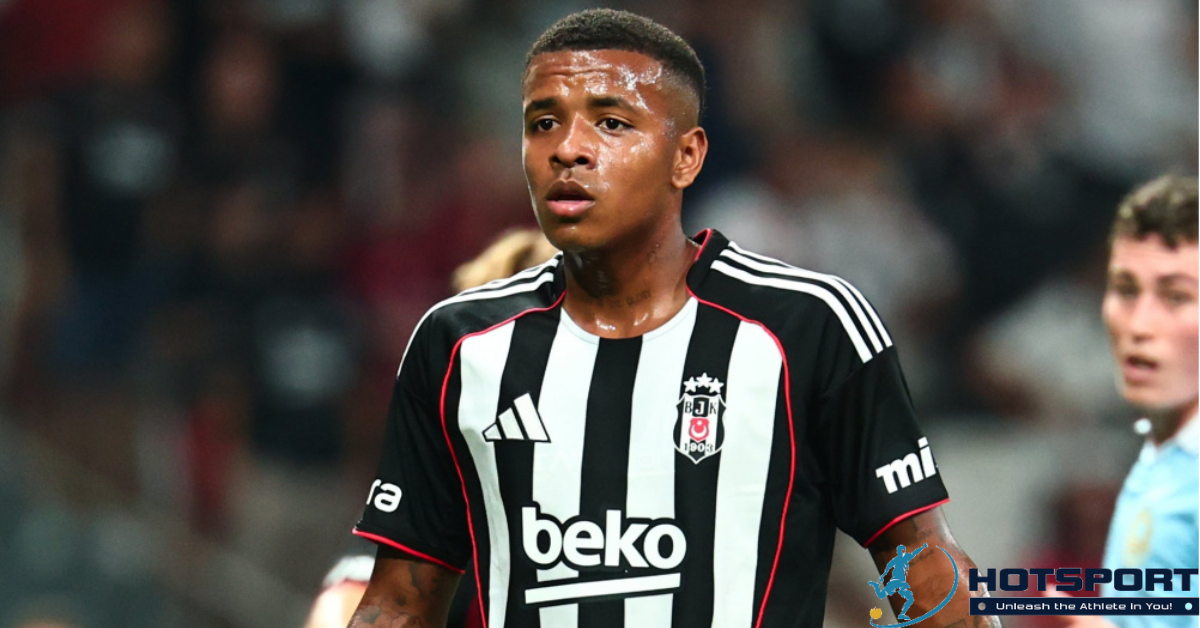Introduction
Sérgio Cláudio dos Santos, known simply as Serginho, is a name that evokes memories of speed, pinpoint crosses, and total commitment on the pitch. Born on June 27, 1971, in Nilópolis, in Rio de Janeiro’s Baixada Fluminense, this left-footed left-back, standing at 1.81 meters, left an indelible mark on Brazilian and Italian football. His career, spanning from 1992 to 2008, was filled with triumphs, challenges, and unforgettable moments. Serginho wasn’t just a player; he was a warrior who combined refined technique with a tenacity that inspired teammates and fans alike.
Over 17 years as a professional, he played over 500 official matches, scored around 60 goals, and lifted trophies with clubs like Bahia, São Paulo, and Milan. With the Brazilian national team, though limited in appearances, he made his mark in the 1999 Copa América. Now, at 54, Serginho leads a quieter life, but his legacy endures in the hearts of fans. This report dives into the journey of this icon, from the dirt fields of his youth to the hallowed turf of the San Siro, exploring the joys and sorrows that shaped his story. Let’s relive the chapters of a life dedicated to the ball.
First Steps in Football
Childhood in Nilópolis
Nilópolis, a modest town in Rio’s metropolitan region, was Serginho’s cradle. Growing up in the Baixada Fluminense during the 1970s and 1980s meant football was part of daily life. Born to a humble family, Sérgio Cláudio spent his childhood playing on streets and makeshift pitches, where the dream of going pro was shared by many neighborhood boys. “Football was our escape, our passion,” he recalled in an interview years later. Limited resources were no obstacle; instead, they forged the resilient character that would define him on the field.
At 10, Serginho showed a natural flair for dribbling and speed down the left flank. His early idols were Brazilian national team left-backs like Júnior of Flamengo, whose elegance he tried to emulate. His family, though modest, supported his dream, as he balanced school and informal training. It was during this time that local scouts noticed him, opening doors to a future that once seemed distant.
Youth Career Beginnings
Serginho’s official entry into football came in 1988 when he joined the youth ranks of Esporte Clube Nova Cidade, a small club in São Gonçalo. From 1988 to 1993, he progressed through all age groups, honing fundamentals and learning the discipline the sport demands. Daily training, short trips, and the pressure of representing the team shaped his athletic physique and competitive mindset.
His professional debut came in 1992 with Itaperuna Esporte Clube, a regional side in Rio. He played just one match and scored no goals, but it was enough to draw attention. At 21, Serginho displayed versatility: he could play as a left-back or midfielder, always with intensity. This solid foundation prepared him for bigger leaps, proving that Nilópolis’ talent could shine beyond local borders. Gradually, he gained experience, dreaming of Brazil’s major football hubs.
Rise at Bahia and Flamengo
Tricolor Idol at Bahia
In 1993, Serginho joined Esporte Clube Bahia, a Northeast giant. It was here that he began building his reputation. With 35 matches and three goals, the young left-back became a fan favorite. His speed down the flanks and sharp crosses were lethal in attack, while his solid defending held firm at the back.
The highlight came in 1994 with the Bahia State Championship title. Serginho was a key figure in the campaign, helping Bahia overcome rivals like Vitória and Galícia. “He played with his heart,” fans at Fonte Nova would say. At 22, he was already a reference, competing with veterans and earning the coach’s trust. This season propelled him onto the national stage, catching the eye of bigger clubs. At Bahia, Serginho learned the value of the fans’ passion, something he’d carry forever.
Brief Stint at Flamengo
June 1994 saw Serginho transfer to Clube de Regatas do Flamengo, one of Brazil’s biggest clubs. Expectations were high: he arrived to bolster the left-back position, but competition with Marcos Adriano limited his minutes. He played just 10 matches, scoring no goals, in a season of ups and downs for the Rubro-Negro.
Despite the short stay, he left a positive impression in training and friendlies. Flamengo, then in a rebuilding phase, couldn’t fully utilize him, but the Maracanã experience was invaluable. Training alongside stars like Romário and Sávio, Serginho absorbed lessons in professionalism. His time at Flamengo, though brief, served as a springboard for bigger challenges, showing he needed more playing time to shine.
Shining at Cruzeiro and São Paulo
Reserve at Cruzeiro
In 1995, Serginho moved to Belo Horizonte, signed by Cruzeiro Esporte Clube. With 34 matches and two goals, he played mostly as a backup to Nonato, the starting left-back. Still, he contributed in key moments, like the Minas Gerais State Championship campaign. Cruzeiro’s attacking style suited laterals who pushed forward, and Serginho fit perfectly.
These months were a learning curve: he improved defensively, handling speedy attackers like Renatinho. Though not the star, his patience paid off. Cruzeiro, a Libertadores Supercup champion in 1991, was a winning environment, and Serginho soaked up its title-driven culture. This adaptation phase prepared him for a major leap.
Explosion at São Paulo
In 1996, a controversial deal took Serginho to São Paulo Futebol Clube, traded for players like Ronaldo Luiz and Palhinha. It was the perfect move. From 1996 to 1999, he played 179 matches and scored 28 goals, remarkable numbers for a left-back. His versatility allowed him to play as a wing-back or even midfielder, confounding opponents.
Under Telê Santana initially, and later Nelsinho Baptista, Serginho became indispensable. In 1996, he was a Paulista Championship runner-up; in 1997, a finalist again. But 1998 brought the state title against Corinthians, with standout performances. In 1999, he exploded, scoring 14 goals in 26 matches in the first half of the year. His crosses to França and Dodô, combined with sharp dribbling, made him a Tricolor idol.
Golden Era at São Paulo
Achievements and Memorable Moments
Serginho’s years at São Paulo were the peak of his Brazilian career. He was the engine on the left, linking up with Raí and Müller for lethal plays. An iconic moment came in the 1998 Paulista final: with Morumbi packed, he delivered the cross for the title-winning goal in a 2-1 victory over Corinthians.
In 1999, his physical and technical form hit its zenith. Despite occasional injuries, he was the informal captain of the left flank. Serginho also stood out for leadership, encouraging younger players and never shying away from challenges. His 28 goals for São Paulo – many from penalties or free kicks – broke barriers for left-backs of the era.
Off-Field Issues
Not everything was perfect. São Paulo’s board faced financial turmoil in 1999, with delayed salaries and instability. Serginho, always discreet, avoided controversies but later admitted it affected focus. Muscle injuries sidelined him for key matches, and competition with Fábio Aurélio tested his patience. Still, he left with his head high, leaving a legacy of gratitude to the fans.
European Adventure with Milan
Arrival in Italy
In mid-1999, Associazione Calcio Milan, coached by Fabio Capello, bet 10 million euros on Serginho. At 28, he swapped São Paulo’s heat for Milan’s cold. Adapting wasn’t easy: Italian football was more tactical, with tight marking. But his speed and crosses won over the coach and Rossoneri fans.
In his first months, he alternated between bench and starting lineup but soon established himself. By 2000, he was a key player, lining up alongside Oliver Bierhoff and Andriy Shevchenko.
Titles and Highlights
Serginho’s Milan was a juggernaut. In 2002-03, he helped win the UEFA Champions League, defeating Juventus 1-0 on penalties in Old Trafford. Serginho played every minute, marking opponents masterfully. The following year brought the Italian Scudetto, with 33 matches and key assists.
From 1999 to 2008, he played 280 matches and scored 25 goals for Milan. Highlights include the 2003 UEFA Super Cup, 2003 Coppa Italia, and 2007 Club World Cup. At 36, his 2008 farewell against Udinese (4-1) was emotional: standing ovation, tears, and a symbolic trophy lift.
Partnership with Milan Stars
Serginho formed an unbeatable duo with Cafu in defense. Alongside Kaká, Clarence Seedorf, and Paolo Maldini, he learned what it meant to be an elite professional. “Milan transformed me,” he said. His humility helped him integrate quickly, becoming a club ambassador in South America.
Brazilian National Team
Call-Ups and Copa América
With Brazil, Serginho played from 1998 to 2001, in 10 matches with one goal. Called up by Zagallo for the 1998 World Cup, he stayed on the bench. His brightest moment was the 1999 Copa América in Paraguay: a starter, he helped secure the title with solid performances against Uruguay and Argentina.
He was Felipão’s option at left-back, but injuries and competition with Roberto Carlos limited his chances.
Controversial Decision
In 2001, after a call-up for friendlies, Serginho sent a letter to the CBF requesting no further summons. Frustrated with limited opportunities, he said, “I’d rather focus on my club.” Years later, he regretted the impulsive move: “The national team is sacred.” The decision removed him from Brazil’s radar but doesn’t tarnish his pride as a five-time champion supporter.
Return to Brazil and Retirement
Back to São Paulo
In 2004, after a Milan injury, Serginho returned to São Paulo on loan. He played 20 matches, contributing to the Rio-São Paulo Tournament campaign. It was a heartfelt reunion with the fans, though his heart remained tied to Italian football.
Final Years and Farewell
Back at Milan in 2005, he won the Champions League again in 2007 against Liverpool. Retirement came in 2008, at 36, after 16 years in Europe. “I reached my limit, but with no regrets,” he said. His farewell marked the end of an era for the Rossoneri.
Life After Football
Milan Consultant
Post-retirement, Serginho stayed with Milan as a market consultant in Brazil, scouting talents like Lucas Paquetá. His network in Brazilian football is enviable, and he travels between Milan and São Paulo, promoting the club.
He also participates in charity events and speaks on resilience. Married to Lia Paiva, he has two sons: Matheus and the late Diego. His family life is low-key, rooted in simple values.
Family and Legacy
Serginho is remembered as the “eternal Rossonero.” His attacking style influenced left-backs like Marcelo. In Brazil, he’s a forever idol of São Paulo and Bahia. He founded a football school in Nilópolis, supporting underprivileged youth. “Football gave me everything; now I give back,” he says.
Recent Updates (2025)
In 2025, at 54, Serginho remains a Milan ambassador, engaging in promotional activities in Latin America. In March, he attended a charity event in São Paulo, reuniting with former teammates like Cafu and Raí to raise funds for favela projects.
However, 2024 brought personal tragedy. In August, his 20-year-old son Diego passed away from a bacterial infection that led to sepsis. The news devastated Serginho and his family. In October 2024, Lia Paiva used social media to raise awareness about lung infections, revealing Diego contracted a rare bacteria after a simple flu. “Take care of your health; don’t underestimate symptoms,” she wrote in a viral, heartfelt post.
Serginho, always private, paid subtle tributes to Diego in November 2024, posting old photos on Instagram with captions of eternal love. In 2025, he focused on family, canceling some trips to stay with Matheus and Lia. Close friends say he found strength in faith and the Milan fans’ support.
Despite the grief, Serginho plans to release a memoir by late 2025, sharing untold career stories and life lessons. “Losing Diego taught me to cherish the present,” he confided to a reporter in April. He also intensified efforts at his Nilópolis football school, now named after Diego, offering free medical checkups for kids.
In football, Serginho commentated Champions League matches for Italian broadcasters, praising young left-backs like Theo Hernández, his spiritual successor at Milan. In July 2025, he played in a charity match in Milan with former Rossoneri, donating his fee to child health causes. His resilience shines: even in mourning, he continues to inspire.
In September, visiting Morumbi for a São Paulo-Corinthians classic, Serginho was cheered by fans. Tearfully, he thanked them: “Football is family.” At 54, he plans more time in Brazil in 2026, possibly as Milan’s official scout.
Serginho’s legacy transcends trophies. It’s about a man who faced glory and loss with dignity, proving a true champion plays for life. From Nilópolis to Morumbi to the San Siro, his name echoes as a symbol of dedication. May his story continue to inspire generations.



